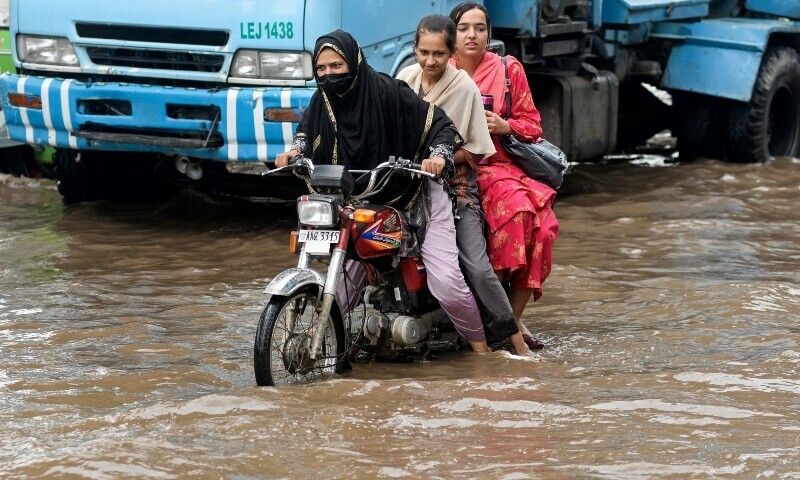Heavy monsoon rains wreaked havoc across Punjab and Balochistan, claiming the lives of 11 people and leaving many injured. The deluge hit Lahore and its neighboring districts, as well as some parts of Balochistan, causing widespread flooding and chaos. In Lahore, the downpours exposed the city’s inadequate drainage system, plunging low-lying areas and major roads underwater. The city received an average of 58.8mm of rain, with some areas like Nishtar Town recording a staggering 84mm.
The torrential rain not only highlighted the weaknesses in Lahore’s infrastructure but also sparked a public health crisis as rainwater mixed with sewage, creating hazardous conditions for residents. Tragically, a child was electrocuted in Yakki Gate due to exposed wiring, reflecting the dangerous consequences of the flooding. The city grappled with power outages as multiple Lesco feeders tripped, leaving thousands without electricity for hours.
Residents faced immense challenges in navigating the flooded streets, with some areas like Farrukhabad and Johar Town bearing the brunt of the deluge due to inadequate drainage systems. Despite efforts by authorities, including claims of deploying cleaning teams and clearing waste containers, citizens reported minimal improvements on the ground. The situation was exacerbated by the delayed response in clearing water from the roads, especially in low-lying areas.
The impact of the heavy rains extended beyond Lahore, affecting various districts in Punjab. Khanewal, Rawalpindi, Sahiwal, Murree, Okara, and other regions experienced significant rainfall, leading to further casualties and injuries. In Sheikhupura, two children lost their lives when their house collapsed, while in Pakpattan, rescue teams worked tirelessly to save individuals trapped under the rubble of a collapsed building.
The Pakistan Meteorological Department warned of more intense rainfall in the coming days, particularly in Lahore and parts of Punjab. The provincial government imposed restrictions around rivers and canals to mitigate the risk of flooding. Furthermore, the National Disaster Management Authority anticipated rising water levels in several rivers, potentially resulting in low-level flooding in various areas.
In Balochistan, the impact of the rains was equally devastating, with two individuals losing their lives in rain-related incidents. Heavy rainfall and strong winds led to tragic accidents, including a fatal incident in Mastung where a tanker carrying LPG overturned, resulting in a casualty. The region faced challenges due to slippery roads and infrastructure damage, further compounding the difficulties faced by residents.
Amidst the chaos, Gilgit-Baltistan grappled with the repercussions of glacial melting, intensifying flooding and soil erosion. The region experienced significant disruptions to power, water supplies, and infrastructure, leaving communities vulnerable. The local administration highlighted the challenges posed by rising water levels, which severed links to several areas and damaged critical infrastructure, impacting daily life and livelihoods.
As the region battled the aftermath of the deluge, the collaboration between Jazz and the NDMA to deliver geo-fenced SMS alerts to flood-prone areas offered a glimmer of hope. The initiative aimed to enhance public awareness and facilitate timely evacuations, underscoring the importance of preparedness in mitigating the impact of natural disasters.
The unfolding events in Punjab, Balochistan, and Gilgit-Baltistan underscore the urgent need for robust infrastructure, disaster preparedness, and climate resilience measures. The devastating consequences of the monsoon rains serve as a stark reminder of the vulnerabilities faced by communities in the face of extreme weather events. As authorities and stakeholders work towards recovery and rebuilding efforts, the focus remains on safeguarding lives, livelihoods, and essential services in the wake of the natural calamity.

